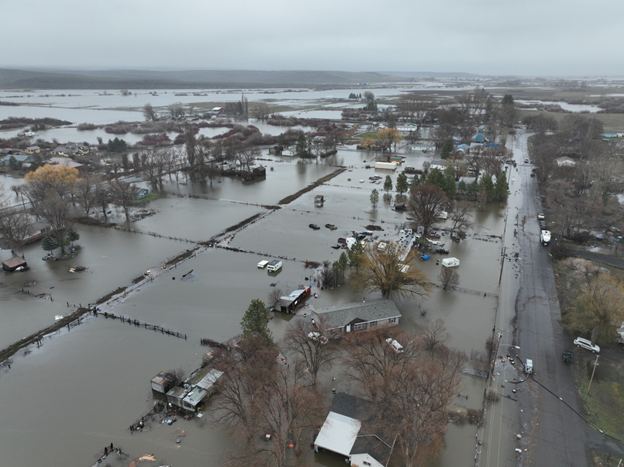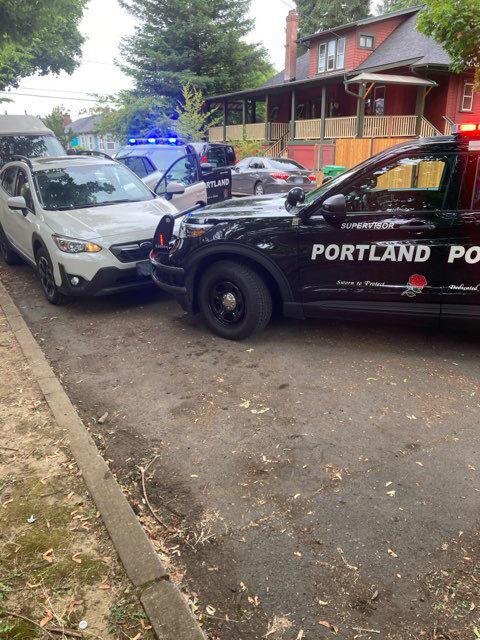Commentary: Whose responsibility is eastern Oregon flooding?
Published 9:55 am Thursday, May 1, 2025

- An aerial image taken on Sunday, March 30, 2025, documents flooding impacts to the Burns Paiute Reservation. (Photo courtesy of the Tribe’s Natural Resources Department and Trey Wall.)
Possibly no place in Oregon has a more rugged, individualistic, even anti-governmental attitude than Burns, a small city in the middle of the state’s southeast desert country.
This is an area of old-style ranchers and resource industries, or at least has been. It votes as conservative and Republican as it can, and political people who argue for smaller government and less by way of cooperative efforts are those who get the votes. It’s a cowboy ethic kind of place.
The recent big event in Burns might not demolish that world view. But there’s a fair chance it could generate some second thoughts.
Trending
An absence of government action, regulation and ownership and of a strong mutual cooperative effort among people locally -— in contrast to what one person called “kind of a group-hug scenario” — is why, in late March and early April, a lot of Burns was overrun by a flood.
Such a disaster might have been notable in other places, but it overwhelmed Burns. According to the American Red Cross, the flooding abated only after several weeks, affected 952 homes (some of those may have been on Burns Paiute Tribe lands), and the flood area ran through most of the downtown area. Burns is home to just 2,736 people as of 2023, and there are just 1,438 total homes.
The city reported “a complete sewer failure” from the Paiute Reservation to the Triangle Park, and other infrastructure was hit too. Evacuation orders affected almost half of the people in town.
This was not damage to only a small part of the community but, directly or indirectly, to all of it. And it happened in a place more than an hour’s drive from any other city as large, and two hours away from any that are larger. Help is not close by.
Beginning the task of making sure this doesn’t happen again starts with understanding why this flood hit so hard.
Its natural causes are clear and not unusual. Although the Burns area is arid, heavy rains occur periodically, and the right timing for snowpack melt in the region can cause the Silvies River, which flows from the mountains to the north, to run high.
Trending
The river borders a residential area on the northeast side of town, and high flows there are intended to be contained by an old and informally developed system of levies.
Actually, there is no system in a comprehensive sense. The 2.4 miles of levees — barriers against the water, to keep it channeled — stretching across the north and east side of town apparently were built not by a government or formal organization but by local residents, and the approach was not thoroughly organized. Even the history is foggy: There are no clear records of when the levees were built, or exactly by whom.
A 2019 report submitted to Harney County officials warned that the levees needed upgrading and repair, but that didn’t happen. One reason is that no one specific person or group had the specific obligation to respond: No federal, state or local agency or private entity, and none had the specific authority to enter the private property along the river to make improvements. Everyone could pass it off to someone else.
The do-it-yourself approach remains in place today. During the flooding, a public notice from the city asked residents to stop diverting water onto other properties.
“Do not erect barriers in the streets to divert the water,” the city’s notice said. “This can be a hazard as these are evacuation routes and you could be charged with disorderly conduct in the 2nd degree in addition to being liable for any damages to the neighboring property or properties by that diversion. We understand that these are very scary and unsure times and people are wanting to save their homes and property, but please do not put yourself or other people in danger or damage someone else’s property by trying to do so.”
This isn’t unique to Burns.
Colin Rowan, planning director for the Urban Flood Safety and Water Quality District in Portland, told Oregon Public Broadcasting that the kind of levee system Burns has had can be found in many places all across Oregon including the Willamette Valley, many built a century or more ago.
“There’s not clear responsibility,” Rowan told OPB. “There’s also sometimes unclear funding. How would you actually pay for it? Even if it was privately-owned land or publicly-owned land, they might not even know that repairs are needed.”
Sometimes organized and expert help is what’s needed. Even in communities like Harney County.







